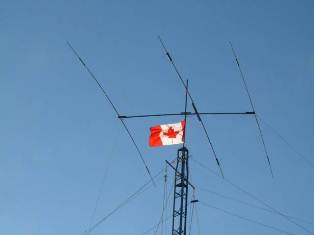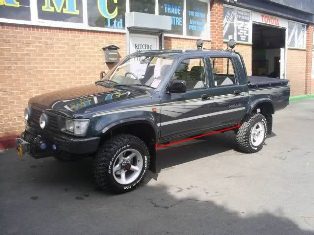
1. Bump and lift
This is probably the most famous lifting technique as far as pick pocketing goes. As the name suggests, it involves bumping into the mark, and lifting the wallet, phone, cash, or whatever you are aiming for.
Now, when you spot your mark, identify which pocket the goods are in. If you cant properly identify that there is actually a wallet in the pocket and you can get close enough, you can actually brush the pockets of the mark to feel for the wallet. This technique is known as “fanning”, and will come in handy during your pick pocketing life.
So, you know where the wallet is, but how do you lift it?
Trail the mark. Lifts like this tend to work better in crowded areas, so if you can trail him until he is in a crowd of people, you can really use this to your advantage. If not, the lift will still work, your bump just needs to be a whole lot more aggressive. In some cases, I’ve known people to actually smash the mark so hard, he has fallen to the ground. Just make sure you bump him just enough to make the lift.
Line yourself up to the mark. Come from a slight diagonal angle, it makes it easier to bump, lift and pass by. Speed up, and approach the mark. You must also remember to keep your eyes OFF the marks pocket, and elsewhere. People can follow your line of sight, and will see you making the lift. Once you reach the mark, use your index finger and thumb, to grip the tip of the wallet. Now get ready to bump.
The bump is merely shoving into the mark, so he is distracted. The mind can only focus
on one thing at a time, so the mark will notice you slam into him, and not notice his wallet being removed from his pocket. This is the split second opportunity you have, to remove the goods from the mark.
Bump into your mark. As you do this, use his forward momentum to help you lift the wallet. Pull the wallet back slightly, and slide it up and out of the marks pocket. Pulling it back slightly will stop the friction between the wallet and the marks leg, reducing the chance of him feeling it.
Another technique you can use here during the bump, is hitting the marks pocket with your knee as you pass him. This is yet another distraction you can add the mix, and if you can hit the wallet up a little too, this will help the wallet come out of the pocket.
Once the wallet is out of the pocket, palm it. Basically, this means concealing it in the palm of your hand. Apologize to the mark if you want, and carry on walking. Head away from the mark and into a restroom if you can, shuck the wallet for cash, and ditch it in the trash. Hell, if you really care, you can wipe it down for prints before you ditch it.
2. Razor blade
This style of lifting works really well. Its fast, easy to pull off, and doesn’t even involve a bump.
Best to keep this one to crowded areas, as its easier to get up close to the mark for a longer amount of time.
There are a few effective ways of slitting a pocket, which are explained below. I personally prefer the third one, as its easy, and the wallet prevents the mark from feeling you cutting his pocket much better than the first method I describe.
1. Single slit (bottom)
Take your razor blade, and make a slit across the bottom of the marks pocket, just below the wallet. Make sure the slit is just wider than the wallet. Put your hand at the bottom of the pocket, and the wallet should just drop out into it as the mark carries on walking. If not, push it down from the top of the pocket. Child’s play.
2. Single Slit (middle)
Make a single slit at the lip of the pocket, in the middle, going straight down. This will allow you to make a really simple lift as you are moving, as the wallet will slide out of the top of the pocket really easily, in one smooth motion. No bumping involved here! (unless you want to, of course
3. Double slit
This time, you will be slitting the sides of the pocket. Start at the lip, and work your way down to the bottom. This should allow the pocket to open up, revealing the wallet inside. All you have to do now, is take it.
Side pocket lifts
As far as pick pocketing goes, side pockets are known for being a lot harder to lift from. These are generally stayed away from, but if there does happen to be a opportunity that you just cannot resist, here is how to pull it off.
1.Bump and lift
Remember the technique we talked about in the back pocket bump and lift? Well, its time to use that all again. Its all pretty much the same thing, except you will be using your index and middle fingers to grab the goods.
Follow your mark, on the side that the wallet is on. Approach him quickly, but this time, hit him from straight behind. Don’t go at a diagonal, like you would do for the back pocket lift. Bump into him, and push him forwards. Again, you use his forward momentum as an advantage to help you lift. As he is falling forwards, slip your index and middle fingers into the pocket, grasp the wallet, and slide it back out. He should literally fall straight away from his wallet.
Palm the wallet, apologize, carry on walking. Same old routine.
2. Dip and slip
I personally love this method of lifting from side pockets. Its probably the easiest one to do, as it doesn’t involve a bump. However, this will only work on pants with really baggy, loose pockets, so be careful. Also, it’s a whole lot easier if you do this move with a jacket over your dipping arm, so the mark doesn’t see your hand going near his pocket.
Trail your mark. Walk quickly, so you catch up to him. Once you get within arms reach, dip your fingers in and grasp the tip of the wallet. This is where the slip comes into play. Sure, you could just slow down, and let the mark walk out of his wallet. But that’s slightly risky, seeing as it IS a front pocket. I prefer this method that I made up a while ago…
3. The cell phone slip
With your free hand, pull out your cell phone. Slow down, so the wallet begins to slide out of the marks pocket. Begin speaking on the phone, I usually just ramble on about a load of crap, and make it sound legit in case anyone is listening. Now, slow down even more, letting the mark walk away from his wallet. Keep talking on the phone, eventually saying something like “Yeah hold on a second, Ill find out what the name of this road is..” or something similar. By now, you should have stopped, the mark should have walked
away from his wallet, and all you have to do is finish off the role by saying “Alright, ill head back the way I came”.
Walk off, shuck for cash, and ditch the wallet.

Oh lawd. The jacket lift. One of the most simple lifting opportunities you will ever come across. Most of the time, you don’t even need to bump into the mark.
Not only can you hit a jacket pocket from any angle, but the mark wont feel a thing…
1. Bump and lift (Behind)
Approach your mark from behind, and slightly to the side of him (whichever side the goods are on). Not too quickly, not too slowly. You don’t really need a large bump for this move to work, so don’t overdo it if you don’t need too. It can often lead to making things messy, and that’s the last thing you want.
Once you are close enough, bump the mark, reach into the pocket quickly and pull out the prize.
Its really that simple.
2. Bump and lift (In front)
See a potential mark, putting a phone or wallet into his jacket pocket in front of you? Simply approach the mark, on the side of him which he is carrying the items. Make sure you are not looking at the mark as you approach him, or else he is likely to spot you eyeing him up and find you suspicious. That said, always be aware of where he is, you don’t want to end up walking into a tree. You will need to walk straight into the mark. While you bump, dip in and make your lift with your outside hand (the hand furthest away from the mark). Apologize for being so careless, and walk off.
3. Dip and slip
You should be familiar with this method by now, it was covered earlier in the guide, and not only does it work on pants pockets, it works on jackets too! In fact, it’s a great method to use when you are trailing your mark, in a slightly crowded place. So how do you pull it off?
Its much simpler to do with a jacket than with a pair of pants, but the principle is the same. Follow your mark, wait until you are within arms reach, dip the pocket with your index and middle finger, and slow down. The mark will walk away from his wallet. Simple stuff.

Heres a little bit of history…
Back when I first started pick pocketing, all I wanted to do was lift from peoples pockets. No matter how much people told me to lift from purses, I was absolutely intent on getting the bump and lift down to a tee. Sure, this had its benefits, it meant I could perform that particular move pretty well, but I really didn’t realize what I was missing out on. That all changed when I gave in to my urges, and went for a purse lift.
Purses have got to be one of my favorite places to lift from, if not THE most favorite. The goods inside are not in contact with the mark at all, women always carry more money
than they need, and the purse itself is designed to be easy to get into so that means easy latches/clips, and usually a flap that covers the top.
Put simply, a pickpockets heaven.
But how do you go about removing the items from inside it?
1. Dipping
This is the most used method, and is fairly simple to pull off. Say you see a girl in the local store, purse slung over her shoulder, browsing through what there is to offer on the shelves. Now, you can be almost certain that she will have a wallet on her, as most girls don’t leave their house without one, especially if they have a purse over their shoulder. She is completely engrossed in what she is looking at, you check that the aisle is clear, and move in for the lift…
Stand next to her, and slightly behind her, so you can reach into the purse more easily. Start browsing the shelf, possibly picking up a few things and having a look at what there is to offer. With your free hand, unclasp the purse. To mask the sound of the clasp, you can use your thumb (hard to explain, but you will know what I mean if you try it). Slide your hand underneath the flap, into the purse, and feel for the wallet, still keeping your eyes on the shelf in front of you.
One you find it, pull it up, slip it out from under the flap, and walk away to the right if the mark is on your right, and to the left if the mark is on your left. This way, you wont have to spin round with the wallet in your hands, possibly drawing her attention and getting
you caught in the act.
Now, walk out of the store, shuck for cash and cards, or whatever is in there, and put the wallet in the trash.
2. Kicking towards you
Ever gone to a library, internet café, restaurant, or anywhere and see a woman take off her purse or bag, and leave it on the floor next to her?
Happens a lot, and this is a great lifting opportunity that you should look out for. Personally, I find it easiest in internet cafés, as the woman is engrossed in what she is
doing on the computer, and doesn’t pay attention to the bag she left on the floor. So for this method, ill describe it as if you were at an internet café.
Take a seat at the computer next to her. Boot it up, and begin doing something – Browsing the internet, writing something on Word, etc. While you are doing this, hook your foot in the strap of the purse, and pull it towards you. Now, reach down, unclasp the purse, and take the goods. Hide the wallet in a jacket, or in your lap, or whatever. Now simply push the purse back over to the mark, get up, and walk out.
Well, that pretty much sums up a few of the best methods to use when pick pocketing. As you continue with your career, you will undoubtedly pick up or invent your own methods of stealing, which work the best for you. This is a great way to improve yourself, and make a better pickpocket, so try and get into your own style as quickly as you can. Just make sure you know the basics first, or else you wont find yourself getting anywhere.
Thanks for reading!
Discuss
http://www.totse.info/bbs/showthread.php?t=4924





































